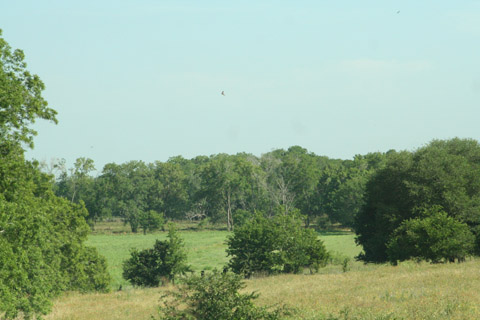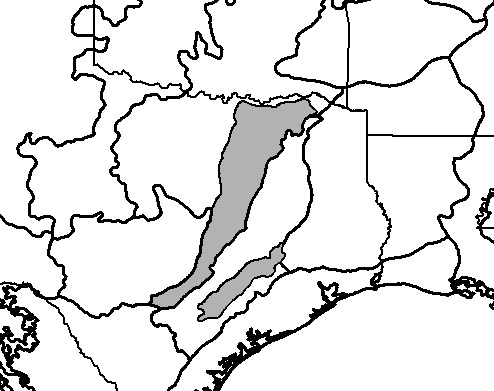
near Schulenburg, Texas
Bioimages home (click on an image to enlarge)
view
this page in its intended navigation context
Texas blackland prairies (WWF
ecoregion NA0814)

near Schulenburg, Texas

Source of bioregions data:
Olson, D. M. and
E. Dinerstein. The Global 200: Priority ecoregions for global conservation. (PDF
file) Annals of the Missouri Botanical Garden 89:125-126.
Distinctiveness (1=highest,4=lowest): 2
(regionally outstanding)
The diversity of soil types in the ecoregion produces a greater community
diversity than that of tallgrass prairies further north.*
Conservation Status (1=most endangered, 5=most
intact): 2 (endangered)
Less than 1% of the original vegetation remains. Cultivation and
urbanization are major threats. Some habitat remains in areas used for hay
production.*


Tripsacum dactyloides (gamma grass)
Panicum virgatum (switchgrass)
Sporobolus silveanus (Silveanus dropseed)
Carex meadii (Mead's sedge)
Paspalum plicatulum (brownseed paspalum)
Some views from the ecoregion
Roadside pasture, eastern Texas





(left) near Borden, Texas, (2nd from left) near Weimar,
Texas, (center and 2nd from right) near Schulenburg, Texas (right) near Engle,
Texas
hires
hires
hires
hires
hires
Cultivated cropland, near Seguin, Texas
* Ricketts, T.H., E. Dinerstein, D.M. Olson, C.J. Loucks, et al. (1999) Terrestrial Ecoregions of North America: A Conservation Assessment. World Wildlife Fund - United States and Canada. Island Press, Washington, D.C. pp. 258-260.
Except as noted, images copyright 2002-2011 Steve Baskauf - Terms of use